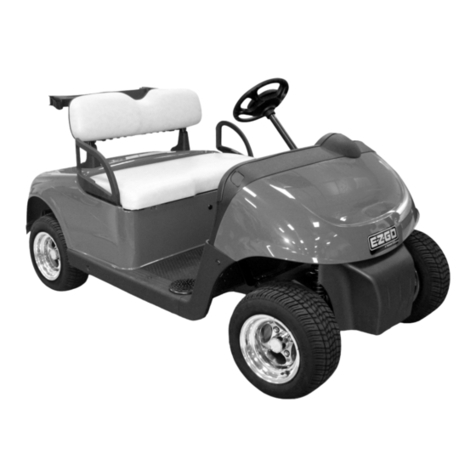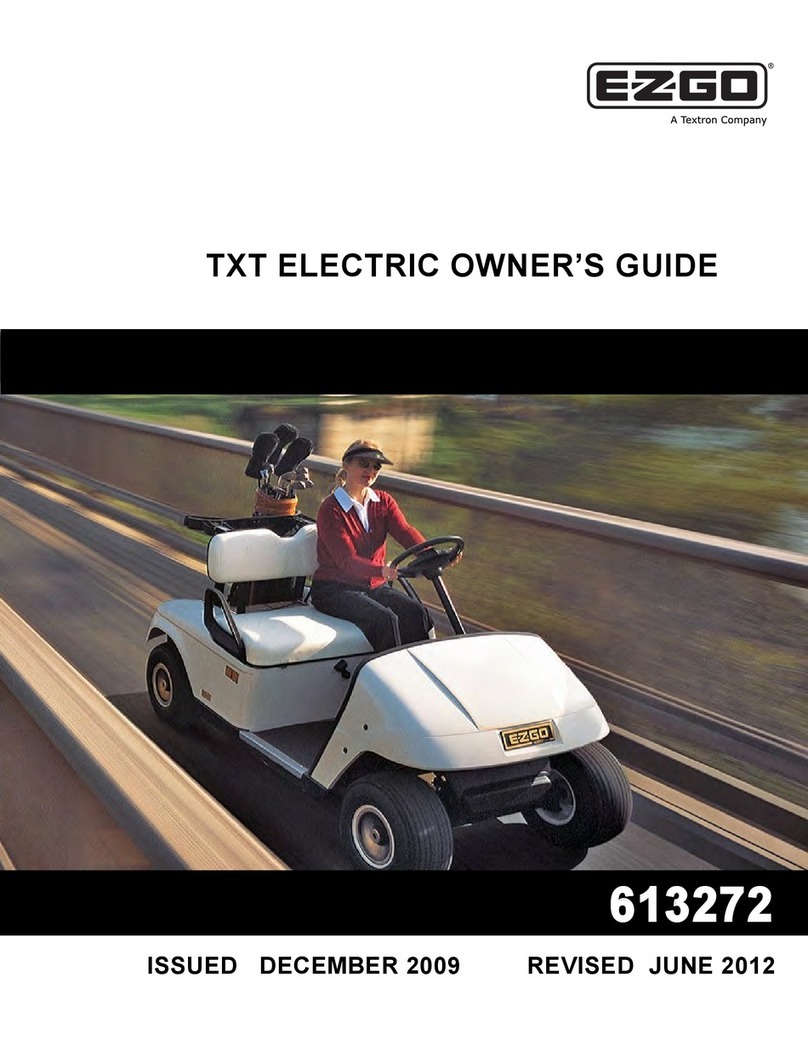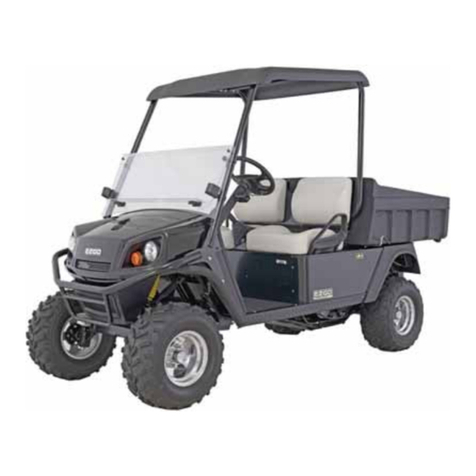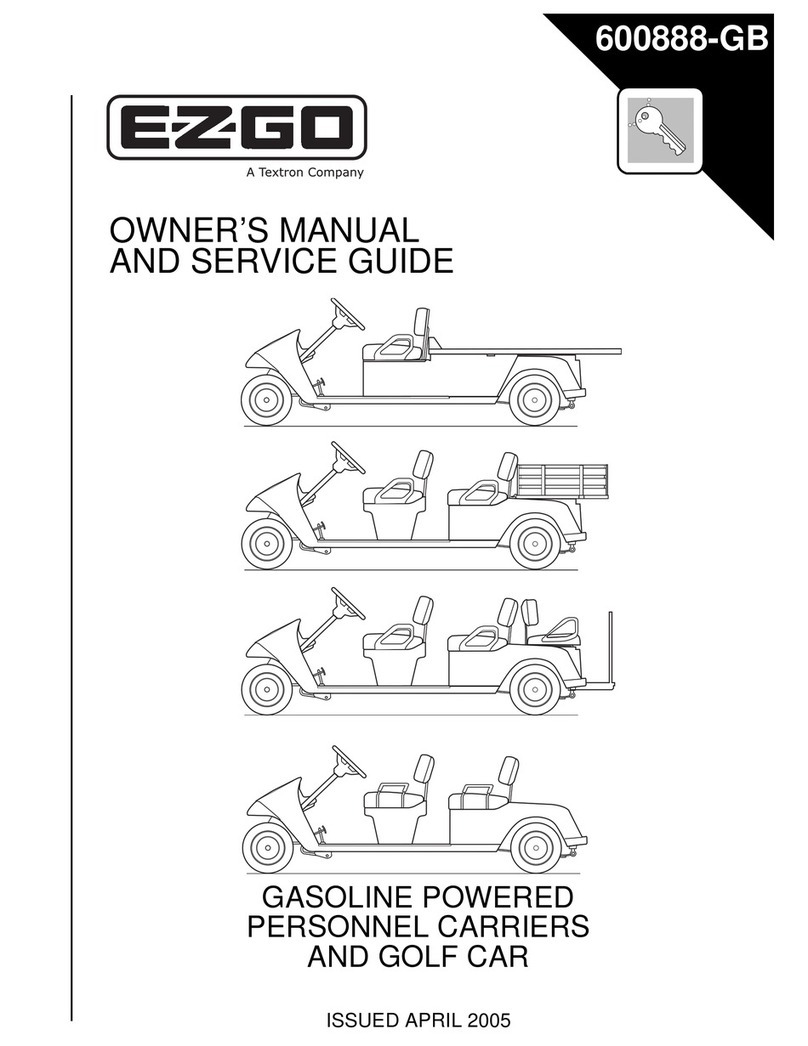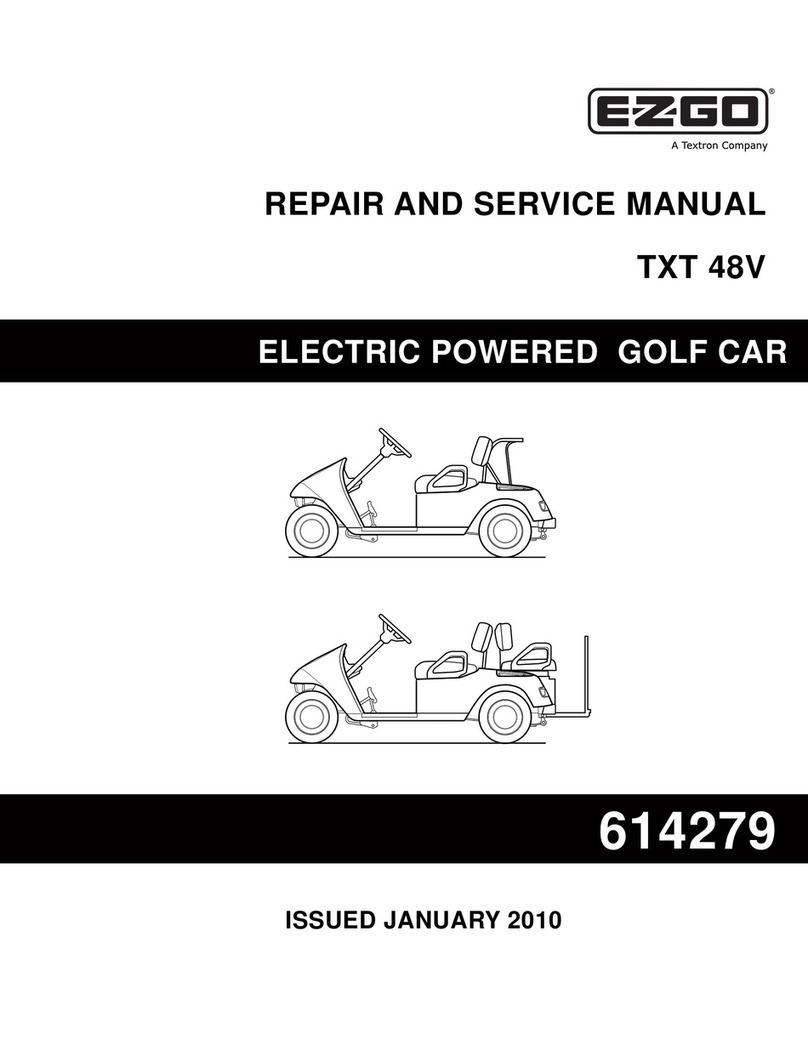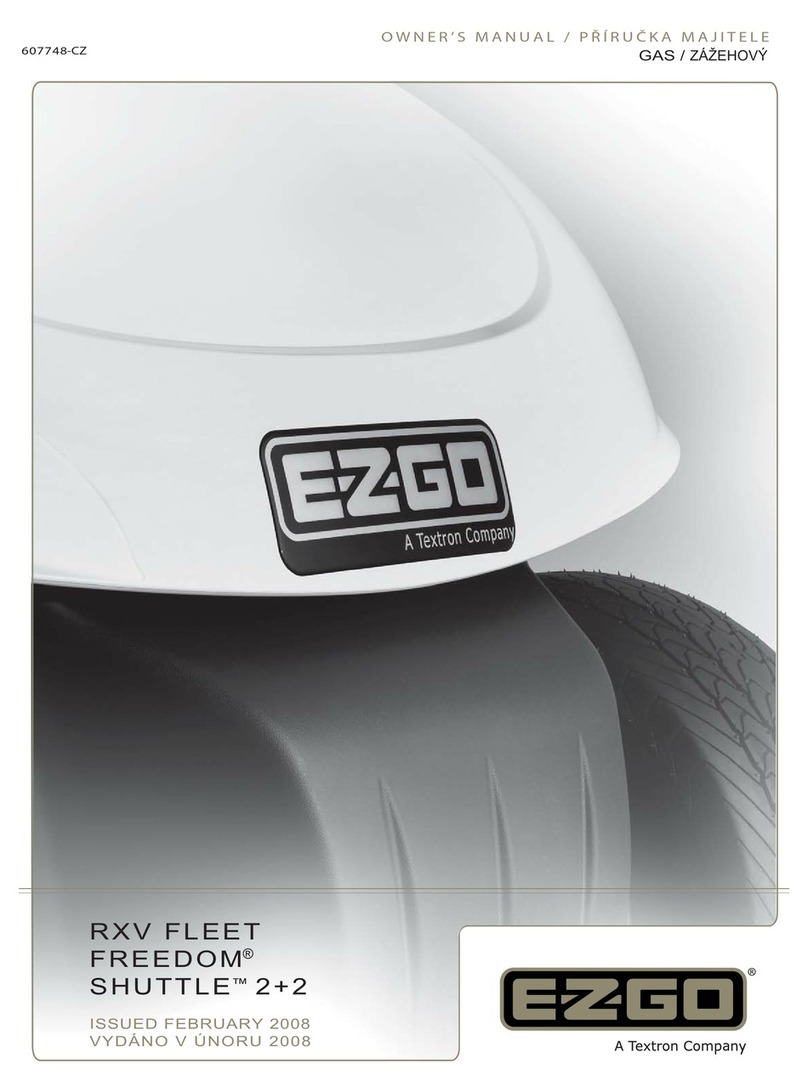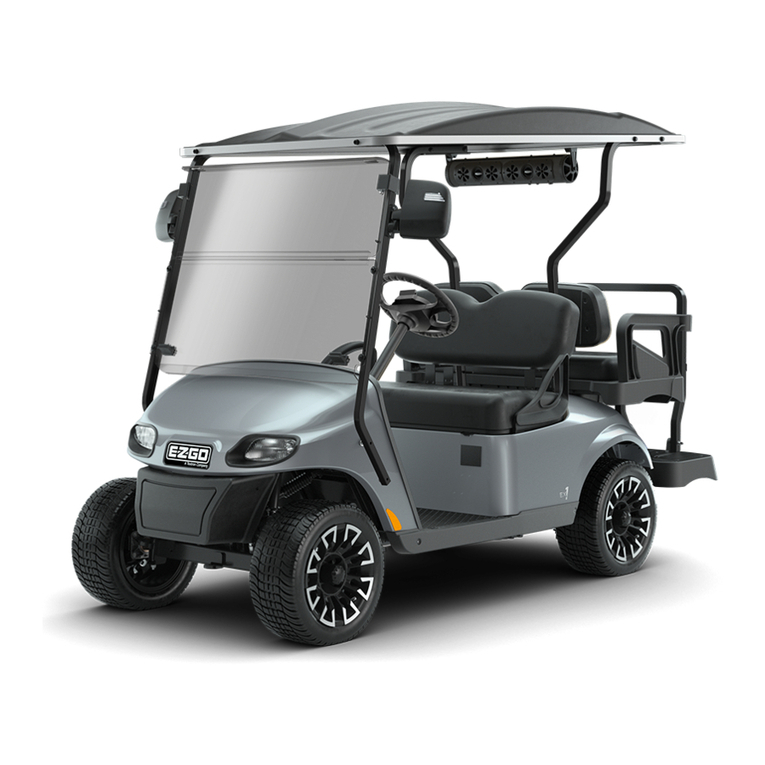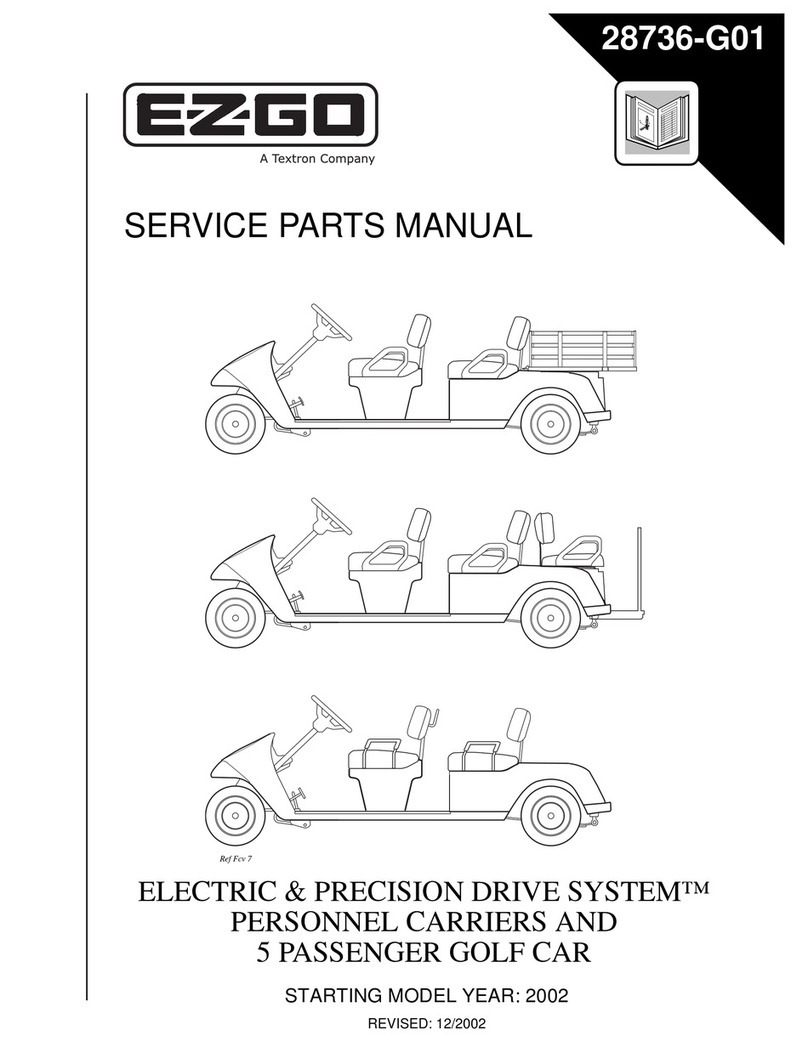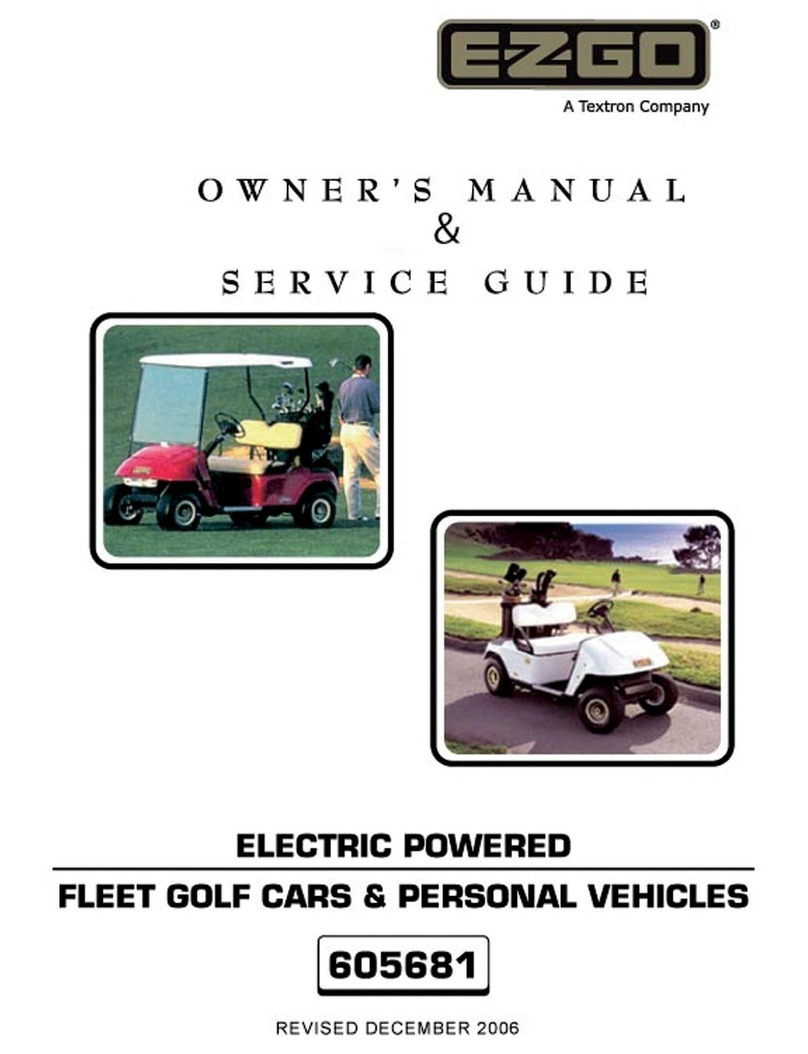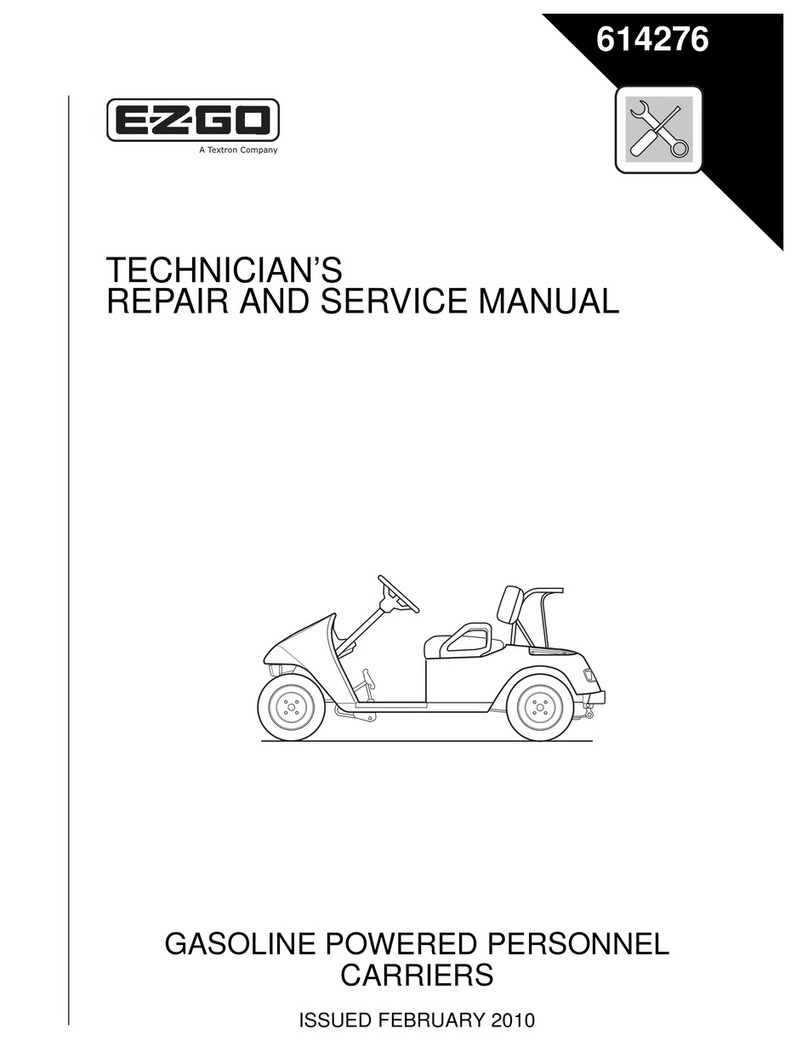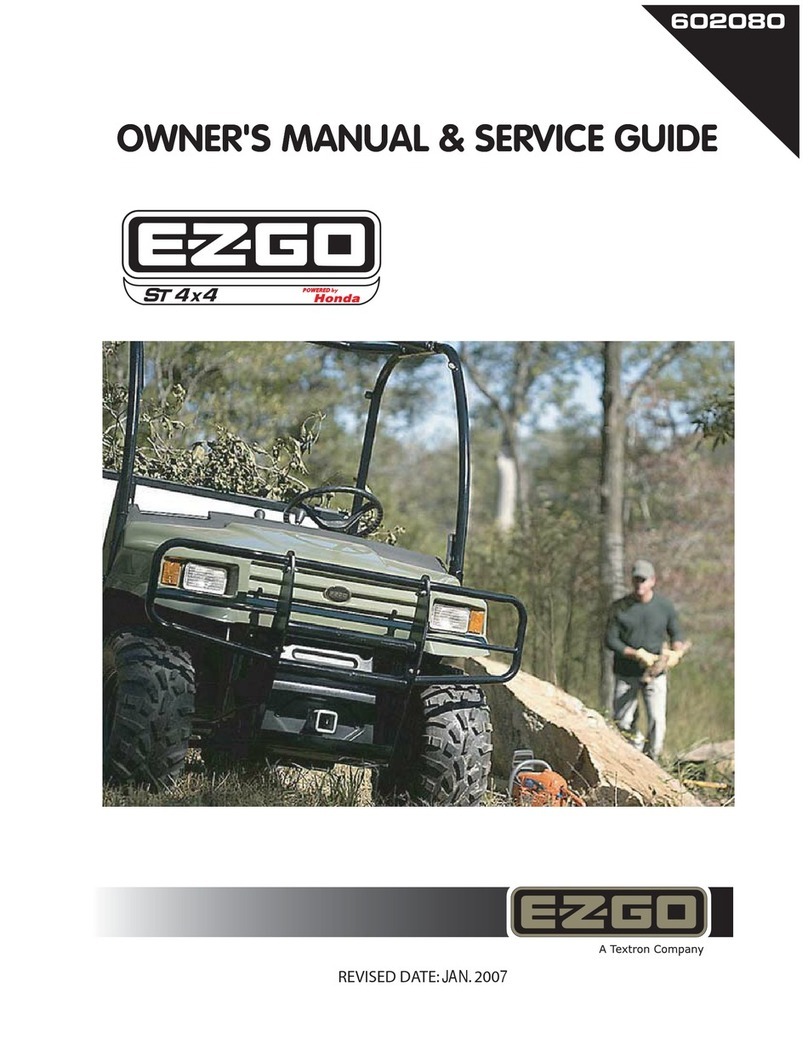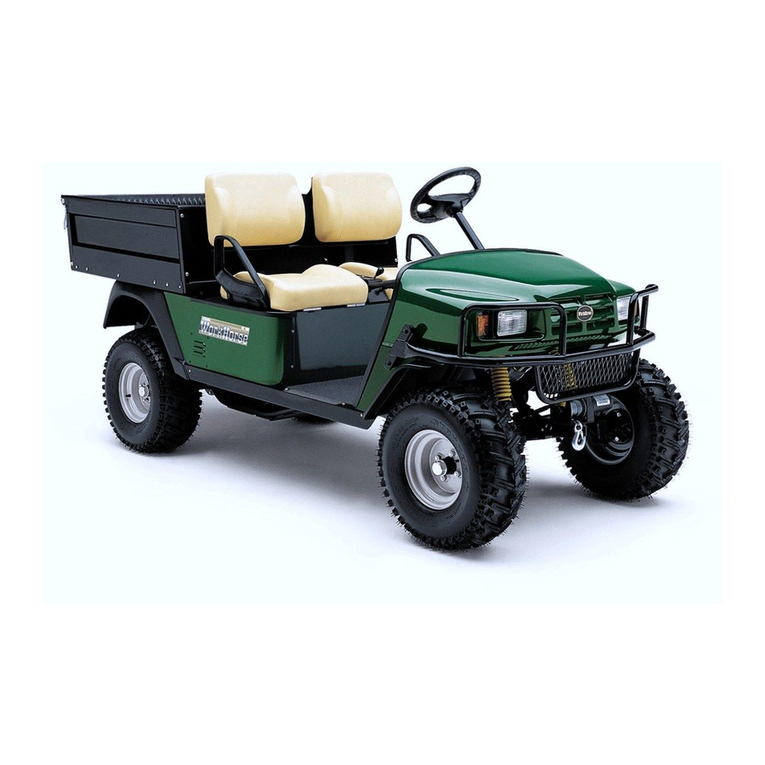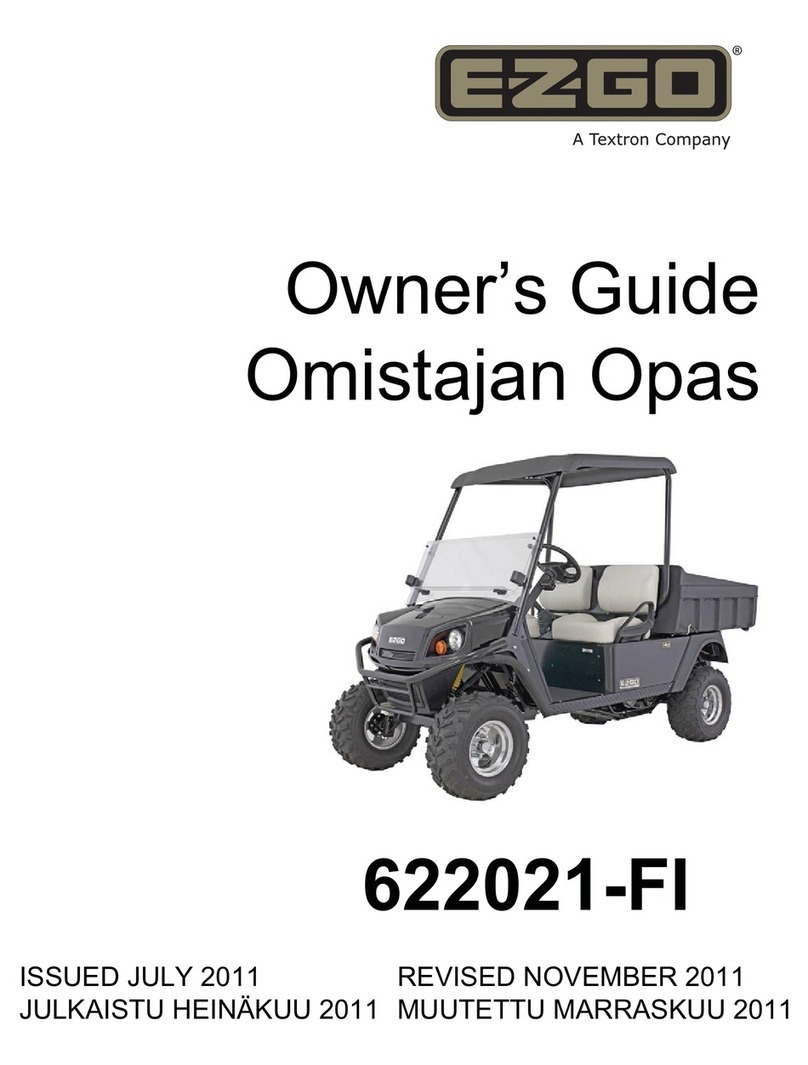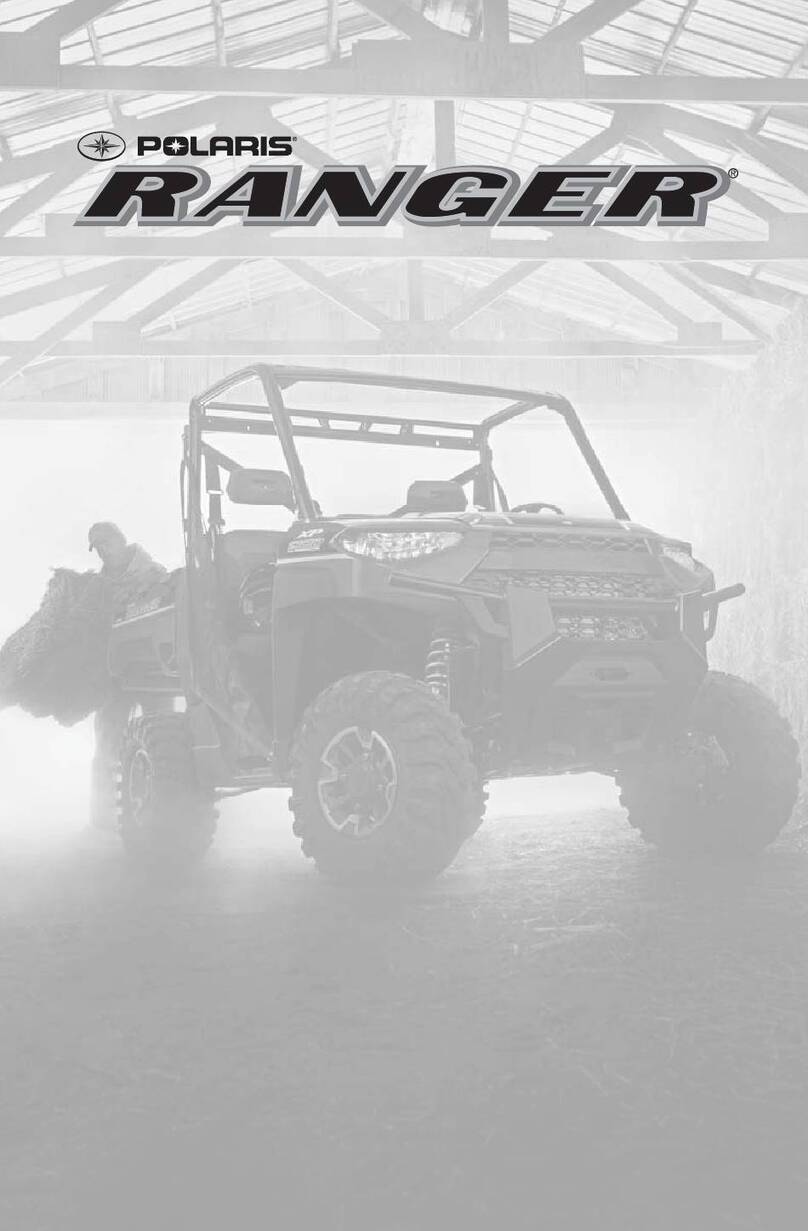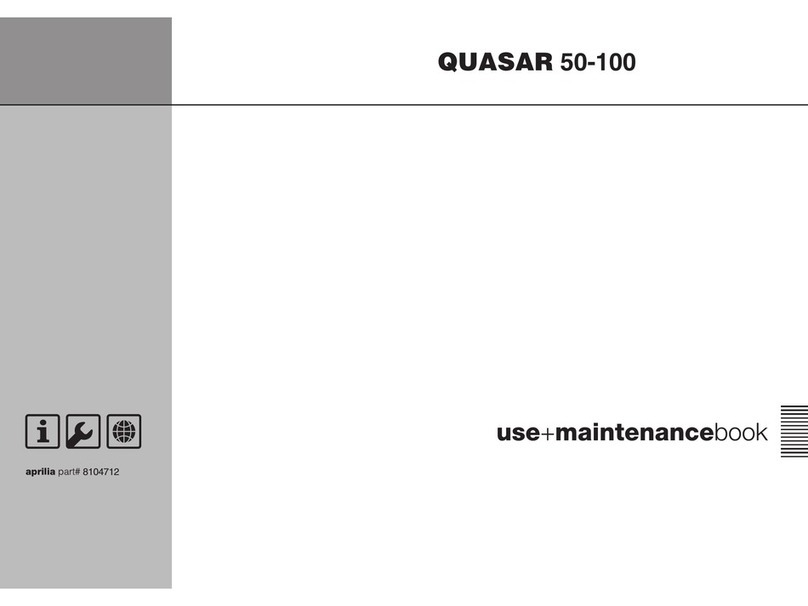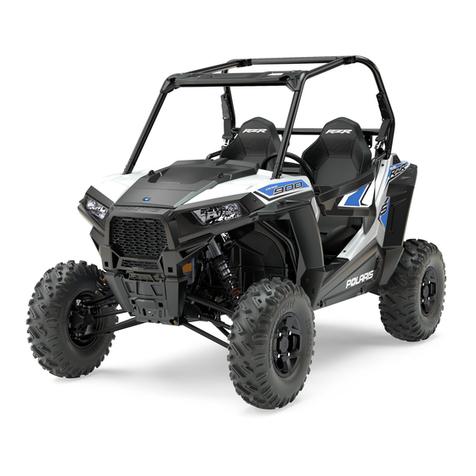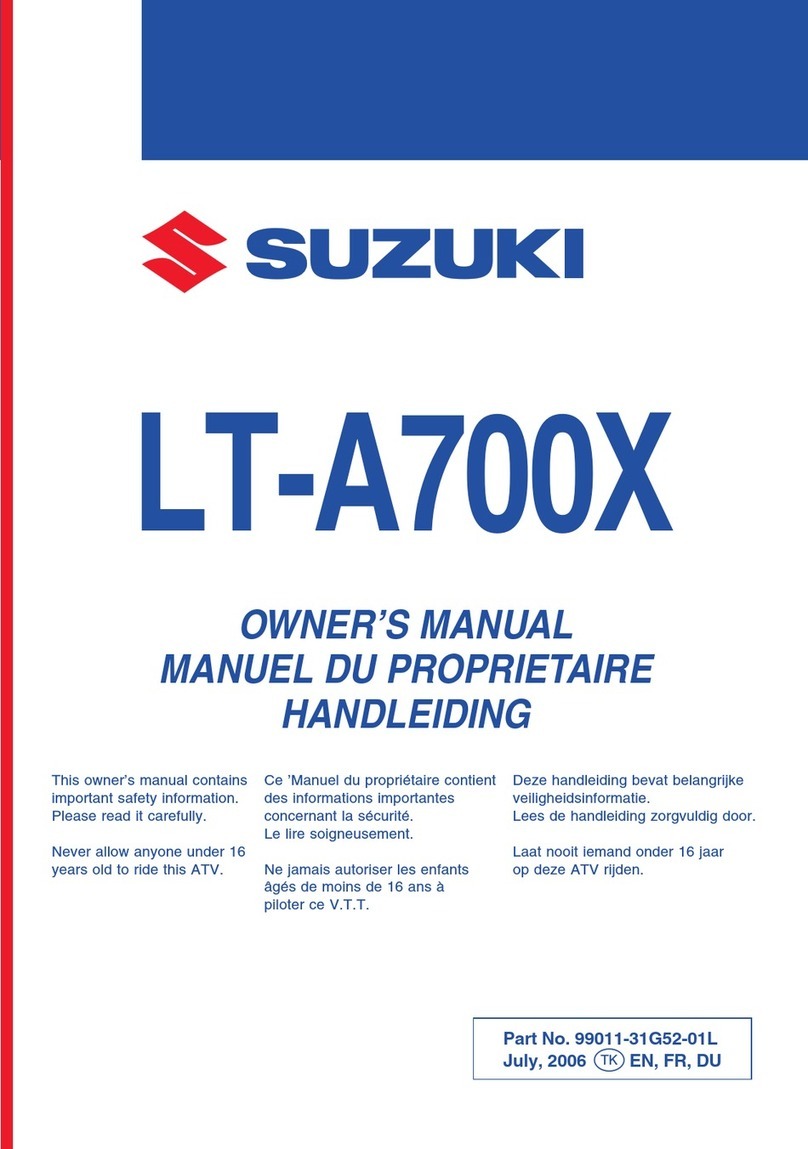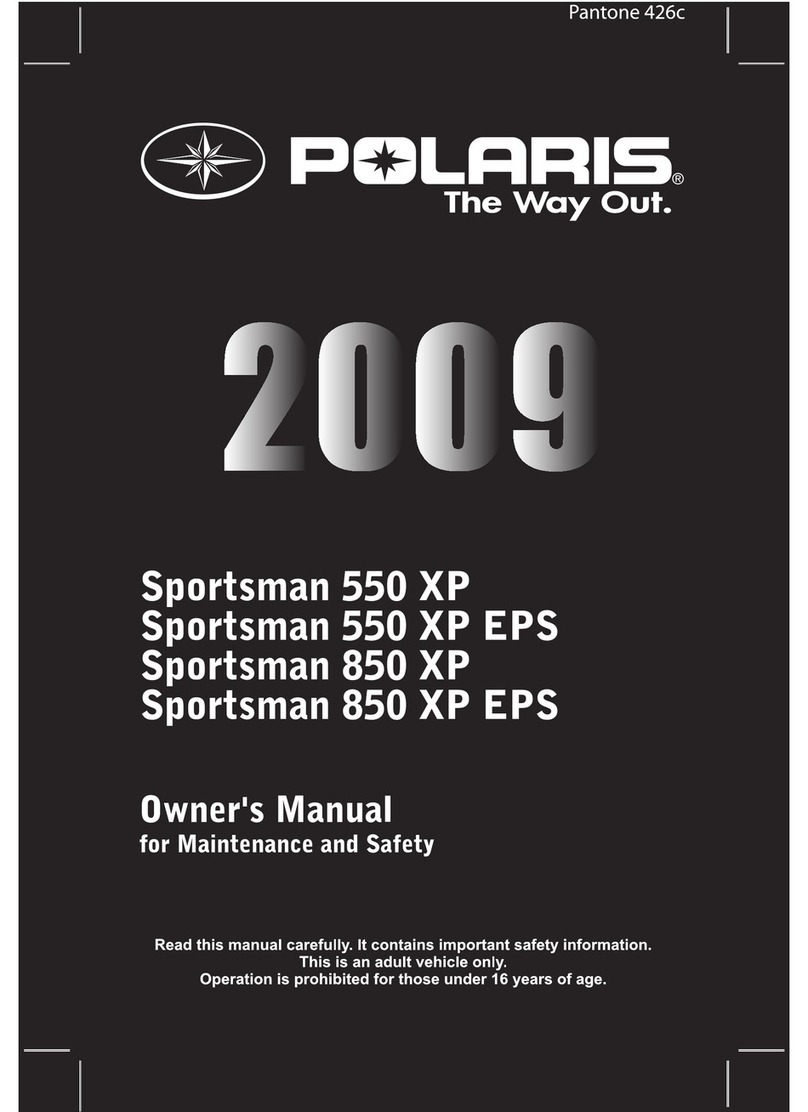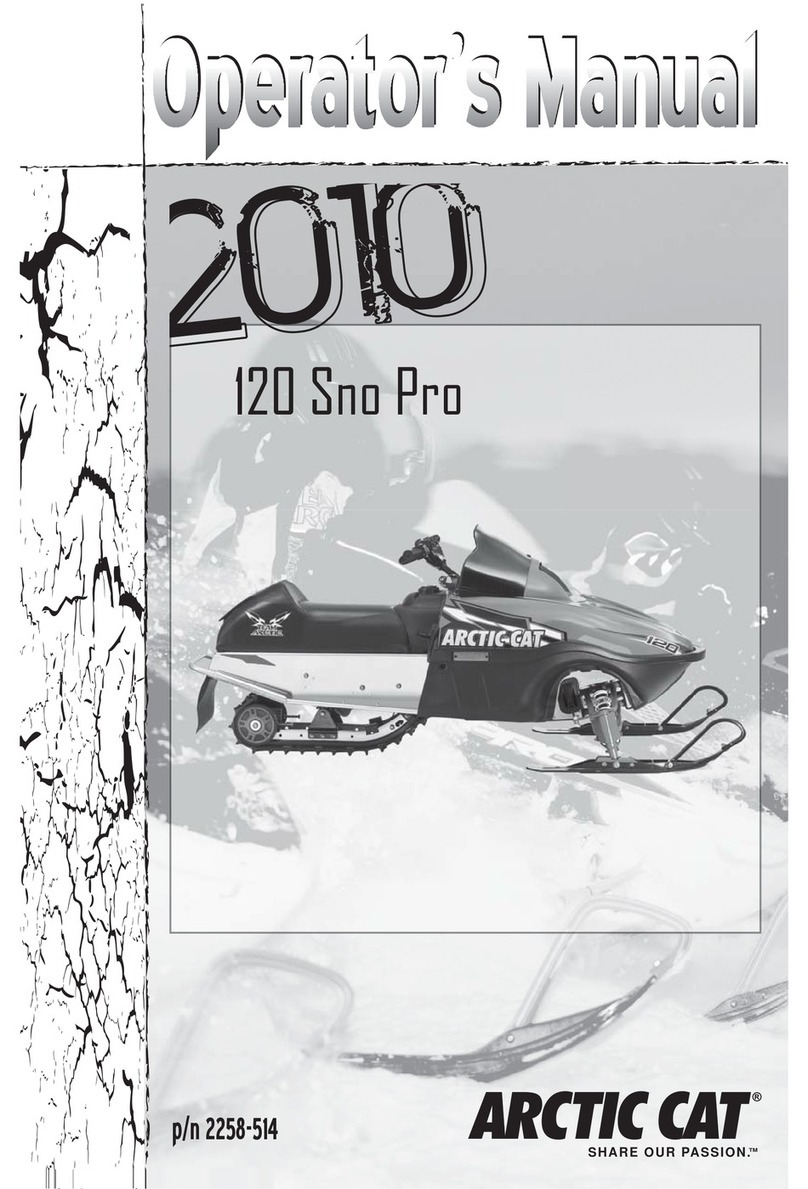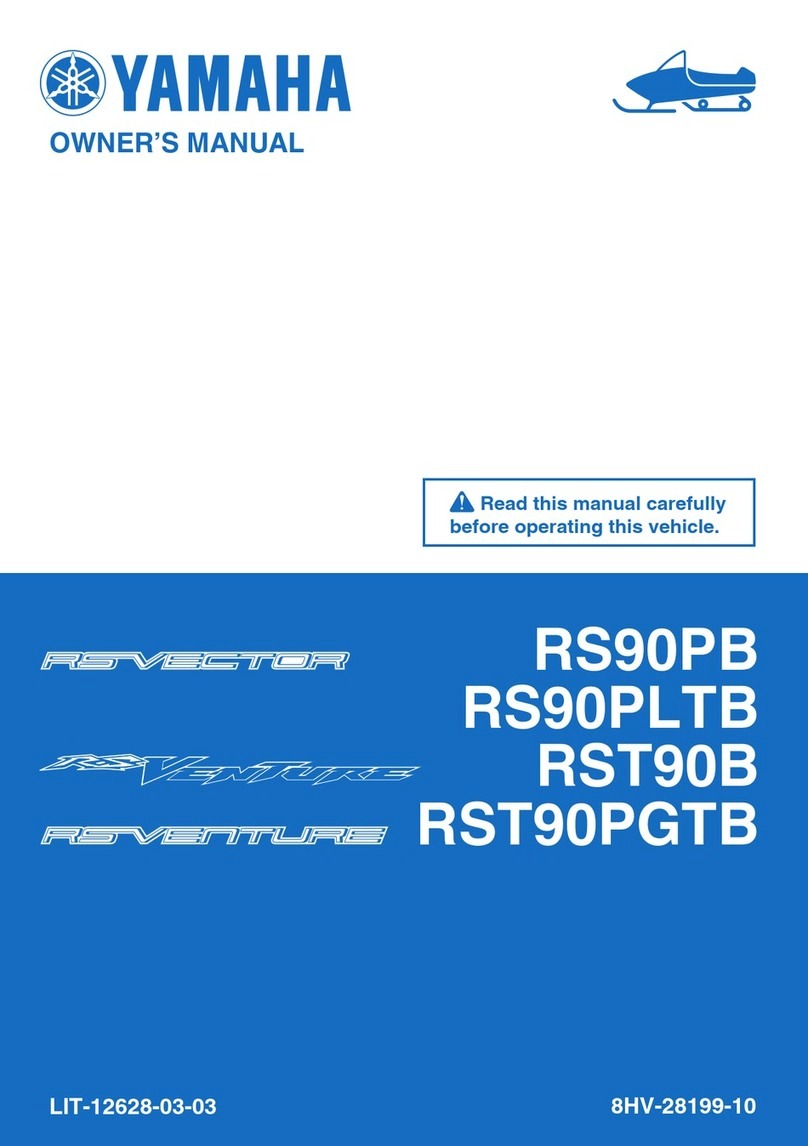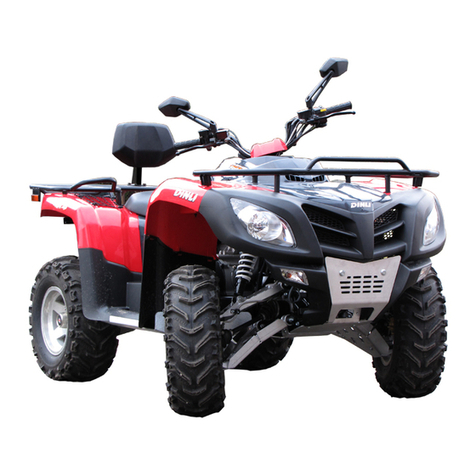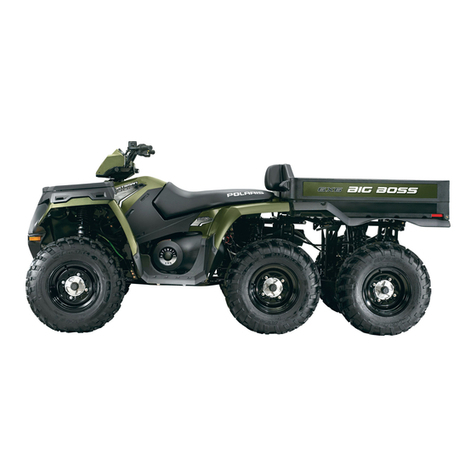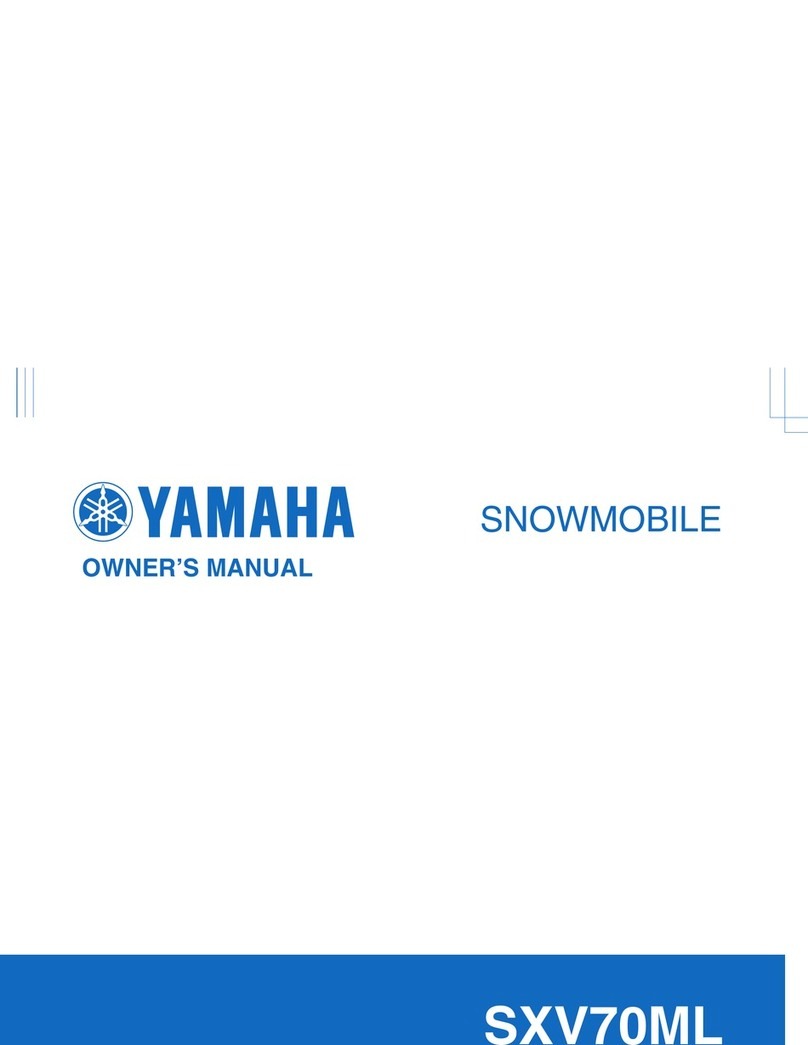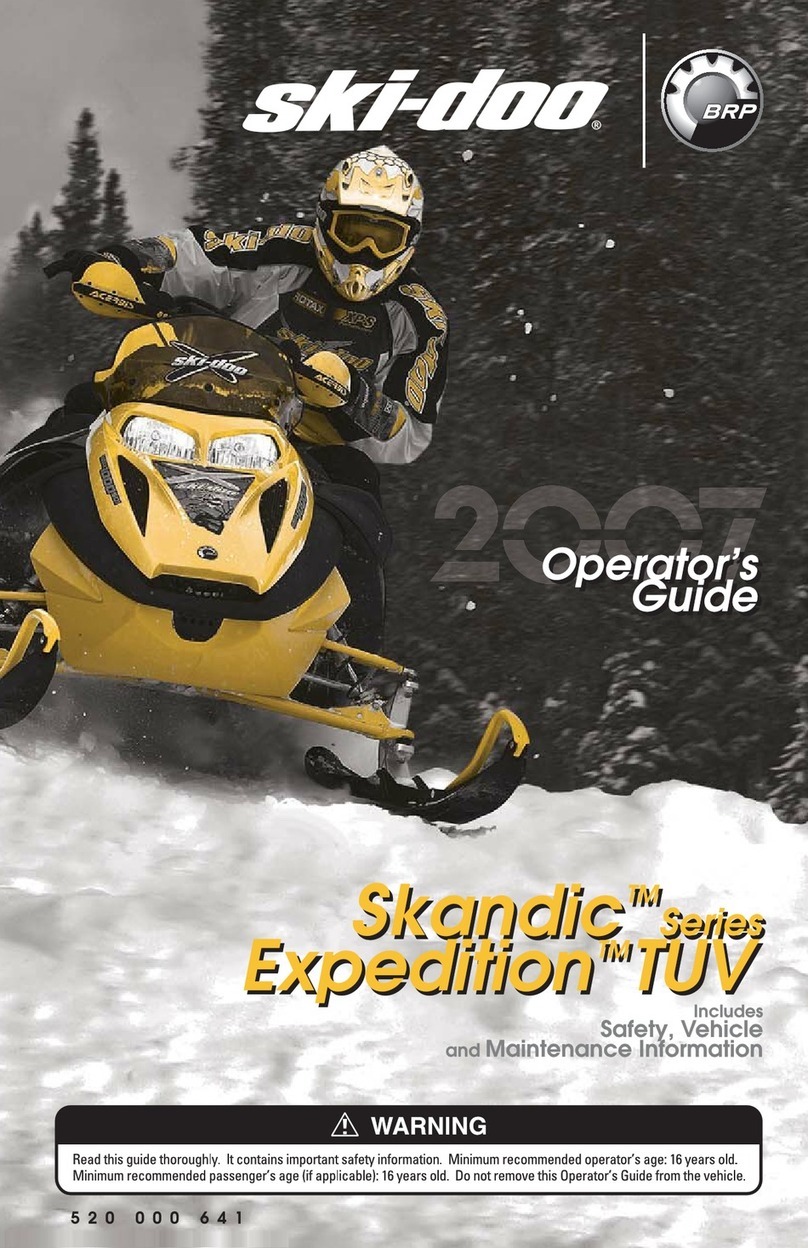
Page iii
TABLE OF CONTENTS
Owner’s Manual and Service Guide
SAFETY ...................................................................................................................Inside covers
NOTES.........................................................................................................................................ii
SAFETY INFORMATION............................................................................................................. v
BEFORE INITIAL USE ...............................................................................................................1
Fig. 1 Initial Service Chart ......................................................................................................................1
Preparation of Seats for Service ..........................................................................................................................1
Charger Installation ..............................................................................................................................................1
Fig. 2 Charger Installation ......................................................................................................................2
Fig. 3 Charger Receptacle .....................................................................................................................2
SERIAL NUMBER PLATE LOCATION ......................................................................................2
Fig. 4 Serial Number Plate Location ......................................................................................................2
CONTROLS AND INDICATORS ................................................................................................2
Key/Light Switch ..................................................................................................................................................2
Fig. 5 Key/Light Switch ..........................................................................................................................3
Accelerator Pedal ................................................................................................................................................3
Fig. 6 Accelerator and Brake Controls ...................................................................................................3
Service Brake Pedal ............................................................................................................................................3
Parking Brake ......................................................................................................................................................3
Direction Selector ................................................................................................................................................3
Fig. 7 Direction Selector ........................................................................................................................3
Horn .....................................................................................................................................................................4
Fig. 8 Horn Button ..................................................................................................................................4
State of Charge Meter .........................................................................................................................................4
Run - Tow/Maintenance Switch (on PDS vehicles only) ......................................................................................4
Fig. 9 Run-Tow/Maintenance Switch .....................................................................................................4
Controller Diagnostics (PDS vehicles only) .........................................................................................................5
BEFORE ENTERING VEHICLE .................................................................................................5
OPERATING THE VEHICLE ......................................................................................................5
Additional Warnings and Cautions (applicable to PDS vehicles) .........................................................................6
STARTING VEHICLE ON A HILL ..............................................................................................6
General ................................................................................................................................................................6
PDS Vehicle .........................................................................................................................................................6
Non PDS Vehicle (with hand operated park brake) .............................................................................................6
Non PDS Vehicle (with foot operated park brake) ...............................................................................................6
Anti-Stall Feature (PDS Vehicle) .........................................................................................................................7
COASTING .................................................................................................................................7
Vehicle with PDS .................................................................................................................................................7
Vehicle without PDS ............................................................................................................................................7
SERVICING THE ELECTRIC VEHICLE ....................................................................................7
DIRECTION SELECTOR ADJUSTMENT ..................................................................................8
Fig. 10 Direction Selector Adjustment ...................................................................................................8
TOWING ..................................................................................................................................... 8
LIFTING THE VEHICLE .............................................................................................................8
Fig. 11 Lifting the Vehicle ......................................................................................................................9
ROUTINE MAINTENANCE ........................................................................................................9
Fig. 12 Lubrication Points ......................................................................................................................9
REAR AXLE ...............................................................................................................................9
Checking the Lubricant Level ..............................................................................................................................9
Fig. 13 Add, Check and Drain Rear Axle Lubricant .............................................................................10
BRAKES ...................................................................................................................................10
Daily Brake Test ................................................................................................................................................10
